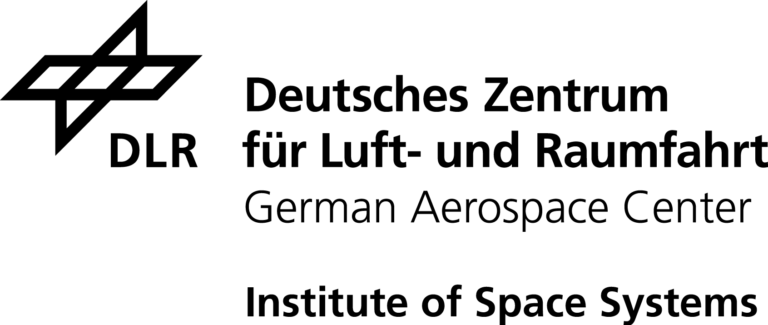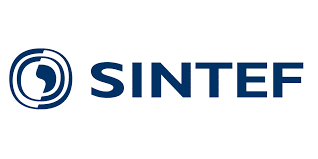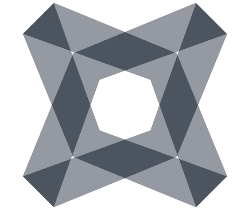P&G has been using Aspherix® simulation software technology for the past eight years for modeling particulate processes via Discrete Element Method (DEM).
Dr. Christopher Stoltz
Procter & Gamble

We partner with DCS Computing to develop numerical methods and enhance our understanding of pharmaceutical unit operations, provide tools for optimization and approaches to minimize the risk of failure during the development of manufacturing processes to create novel medicines for our patients.
Dr. Martin Lubej & Dr. Maximilian Eggersdorfer
Novartis AG

We profit from close collaboration with DCS Computing GmbH on the development of an innovative simulation model that helps us advance in computational process engineering. We appreciate their capacious expert knowledge and strong technical support.
Dr. Markus Klinsmann
Robert Bosch GmbH

Discrete Element Modelling is an essential tool for planetary exploration as well as preparation and development of future missions.
DLR collaborates with DCS since more than ten years and in several projects covering planets like Mars as well as small bodies like asteroids. We enjoy DCS’s exceptionally high degree of professionality and enthusiasm when it comes to DE modelling. DCS takes the challenge to push DEM to new extraterrestrial applications.
Dr. Marco Scharringhausen
DLR | German Aerospace Center

Competences, technologies and excellent services of DCS Computing offers us tailor made simulation capabilities to study complex phenomena in process engineering and plastics industries.
The value creation applying DCS solutions is proven in several projects throughout the years of cooperation.
Dr. Harald Herbst
Borealis Polyolefine GmbH

DCS are one of our official suppliers for a project aiming to develop computational techniques to model waterborne plastic based on the Digital Twin process using Aspherix® and CFDEM®coupling.
We value the teams high-level of technical support, expertise and professionalism and we look forward in continuing to working closely together towards the success of this project.
Dr. Bruno Sainte-Rose
The Ocean Cleanup

Our cooperation with DCS since 2008 has raised enormous synergies and has formed the core values of my research group. My research team and my teaching efforts greatly benefit from the interaction with DCS, as well as their simulation tools. Together with them, we will bring DEM to a new level!
Prof. Stefan Radl
Graz University of Technology

Coupled CFD-DEM approaches offer diverse and interesting possibilities for modelling particle dynamic processes, which are highly relevant in process engineering.
We are currently using Aspherix® and CFDEM®coupling to calculate the flow and heat transport within packed beds. The aim is to be able to numerically describe processes such as the reduction of nitrogen oxides in the temperature range < 200 °C using specially developed particulate catalysts in the future. Aspherix® and CFDEM®coupling make a valuable contribution to our research activities and to the optimization of corresponding procedures and processes.
Dipl.-Ing. Thomas Zeiner
Institut für Umwelt & Energie, Technik & Analytik e. V. (IUTA)

We are looking forward to the new tool Aspherix® which will come out with customer support.
We have found the team at DCS Computing to be very professional in delivering the project outcomes in the most effective way. We highly recommend DCS computing for simulation-based Engineering projects.
Dr. Shahriar Amini
SINTEF

The scientific cooporation of TUHH and DCS in the field of computational soil mechanics using the CFDEM solver enables us to simulate mechanical and hydraulic coupled processes on the length scale of soil grains including soil erosion, transport of soil grains in a suspension, and sedimentation. In ongoing research projects the CFD-DEM coupling is extended towards the simulation of capillary effects in unsaturated granular soils as well as the coupling of ressolved and unresolved CFD-DEM in order to simulate the soil erosion due to the penetration of a fluid jet into the saturated subsoil.
Prof. Dr.-Ing. Jürgen Grabe
TUHH / Hamburg University of Technology

With DEM being a relatively new and emerging method (compared e.g. to the Finite Element Method),
it was very important for us to collaborate with a highly knowledgeable, reliable but also responsive software partner.
We are pleased to say that DCS Computing has been living up to those expectations for years and are looking forward to more exiting projects together in the future.
Josef Bruckner
PÖTTINGER Landtechnik GmbH

DEM is a key application for the realistic simulation of cave propagation in mass mining methods in the mining industry.
Beck Engineering, as a leading provider of rock mechanics simulations in this field is excited to use Aspherix® as a simulation tool to develop the next generation of modelling frameworks for underground operations.
Computational speed, flexibility, and the ability for customization and coupling with other simulation tools make Aspherix® our premier choice as a tool for our research work concerned with granular material simulations.
Dr.-Ing. Frederik Reusch
Beck Engineering Pty Ltd, Australia

Additive manufacturing is gaining popularity in industry due to perceived cost savings, but many issues with reliability still exist. Further progress towards reliable prediction of process outcomes will be essential for industry adoption of additive manufacturing and Aspherix® provides features which are essential for effective research on additive manufacturing, such as non-spherical particles, CFD coupling and load balancing.
Alex Groen
University of Waterloo

The further development of biomass processing technologies can benefit significantly from the use of discrete element modelling. Aspherix® convinced by the possibilities of coupling with other simulation tools as well as by the extensive calculation possibilities for plastic particle deformation. With the tool Aspherix® and the professional support of DCS Computing, the DBFZ aims to become a pioneer in simulation-based biomass processing technologies.
Roman Adam
DBFZ Deutsches Biomasseforschungszentrum

As the coordinator of the TUSAIL ITN, I am delighted that DCS Computing have made their Aspherix® and CFDEM®coupling software available to our early-stage researchers.
Features such as coarse graining, dynamic load balancing and coupling with OpenFOAM are
proving very useful to enable the research proposed in TUSAIL.
Prof. Jin Y. Ooi
The University of Edinburgh

Scientists at Idaho National Laboratory in Idaho Falls, ID, USA have performed DEM simulation studies of bulk mechanical test for woody biomass particles using LIGGGHTS. A reasonable agreement is found between the DEM simulations and physical experiments in a cyclic loading & unloading test, which is used for characterizing the mechanical properties of granular materials.
Yidong Xia, Ph.D.
Idaho National Laboratory
An open source software is a powerful tool, unfortunately I didn’t have the time to learn it from scratch. Aspherix® was the ideal solution to this, allowing me to easily perform simulations with superquadric particles.
Brayan Paredes Goyes
SIMAP

ESCO has utilized DCS’ DEM technology to simulate mining excavation since 2013 for products such as hydraulic face shovels, excavators, draglines and rippers. DCS’ DEM technology and DCS expert support has greatly accelerated ESCO’s capability and project completion rate.
DCS responsiveness and efficiency has exceeded expectations, and is an excellent value.
Ray J. Morris
Weir ESCO
DCS has a long tradition in keeping the finger on the pulse of academic innovations of numerical methods to deliver cutting edge products and services. I am very happy to extend our already fruitful collaboration in the 2019-2023 EU Caliper consortium.
Dr. Joshua Dijksman
Wageningen University & Research
DCS Computing is a reliable partner for Treibacher in the field of process optimization with computer simulations, and the collaboration is excellent. DCS Computing possesses know-how in simulation software, physics and fluid mechanics. Thus we look forward to the future collaboration with DCS Computing.
Rainer Kulter
TREIBACHER INDUSTRIE AG
Software solutions provided by DCS Computing have enabled us to solve industrial problems beyond capabilities of general fluid flow simulators. Support and cooperation with DCS has been excellent throughout these years.
Dr. Tuomo Keskitalo
Neste Engineering Solutions Oy
Cantene uses Aspherix® to simulate rotating dryers where it is necessary to reduce the humidity of different types of sand. Thanks to the proactive support of DCS computing we have been able to create a platform useful to support the design of new optimized dryers of our customer.
Michele Fronterrè
CANTENE S.r.l.

Our PhD candidate within the TUSAIL ITN had the opportunity to utilize the remarkable DEM software developed by DCS Computing for simulating mixing and segregation processes. The software’s incorporation of dynamic load balancing paired with coarse graining have significantly enhanced our candidate’s research by efficiently distributing computational resources, resulting in enhanced simulation performance.
Prof. Vanessa Magnanimo
Soil MicroMechanics, ET, University of Twente

GDTech uses Aspherix® to simulate mixing screws in a recycling process. GDTech benefits from skilled people at DCS computing to better understand the interacting forces involved in the process and the DEM formulation. DCS Computing is very reactive and provides very good support.
Julie Jossieaux
GDTech s.a.

In recent decades, climate control on carbon emissions has become an important issue. Therefore, steel production companies are investing in developing more sustainable processes by recycling more steel to minimize the use of virgin raw materials. Efficient melting of the recycled steel scrap is important but a complicated process. Using cutting-edge numerical tools such as Aspherix® helps us in understanding, developing, and optimizing such complex processes. Aspherix® is a robust and reliable DEM numerical tool for simulating complex scrap particle flow and their interactions with molten metal which can be coupled with the CFD for solving such complicated and large-scale problems.
Mohammed Hassan
3ME Faculty, Technical University of Delft

At the University of Siegen, we utilize Aspherix® for advanced simulations within the field of geotechnical engineering, particularly focusing on sediment displacement around offshore wind turbine foundations. The software’s powerful DEM capabilities and its coupling with CFD are instrumental in our ability to analyze fluid-particle interactions at a granular level.
Aspherix® continues to enhance our understanding of complex hydrodynamic processes, and we highly value the professional support provided by DCS Computing. Their expertise and collaboration are essential in achieving our research objectives.
Prof. Dr.-Ing. habil. Kerstin Lesny, Chair for Geotechnical Engineering
University of Siegen
